April 19, 2025 | 07:17 GMT +7
April 19, 2025 | 07:17 GMT +7
Hotline: 0913.378.918
April 19, 2025 | 07:17 GMT +7
Hotline: 0913.378.918

Drag the net in the middle of the ocean. Photo: Kien Trung.
Mr. Tran Van Tri, 62, from Kien Giang, had 40 years of sailing experience. Similar to others, Tri risks standing on the highest point of the wave, labeling the fishing vessel his home and the sea his motherland.
When the sun reached its highest point on September 18, Mr. Tri and dozens of KG-94019-TS crew members gathered in the cabin's center, surrounding the winch, in preparation for the net hauling.
This is the first net load that had been released from the dawn on the fishing field of the open sea. Via walkie-talkie, helsman Nguyen Luan Truong, 33, sounded as if he was yelling at the sea wind and the unstable signal, directing the "male" vessel to prepare a drawing net approximately half a nautical mile away. In response to the command, the "male" ship aimed towards the "female" ship in an effort to close the net into a circle. The pulley began to operate. Slowly and rhythmically, wrist-sized ropes began to roll up, accompanied by creaking noises as the strands rubbed against the rolling bar. As the seine net was raised higher, the ship grew heavier, similar to a woman in labor.

People collect "gifts" from the sea. Photo: Kien Trung.
Each net group was discharged six hours prior to its retreat. The "female" vessel is the primary vessel, and fish caught on the net are distributed over the compartment for selection before being transported to the freezing trench for preservation. The "male" boat continued its mission of deploying the next net, while the "female" boat continued its mission of collecting fish. Daily, pairs of twin boats can discharge two batches and travel side-by-side on the water like a married couple, making them simple to distinguish from lone trawl boats. There are two "claws" in front of the stem of the ship that resemble the horn of a seagoing beetle.
The lunch net of the fishing vessel piloted by Nguyen Luan Truong caught approximately 3 quintals of fish, including a variety of species: squid, fish, and tiny floating fish. In addition to a bountiful produce, various types of fish were caught. Valuable fish such as cobia, mackerel, and tuna can be captured in the fish channel in volumes of 6, 7 quintals, or even a ton.
"The cost of traveling to sea is increasing daily due to the rising price of crude energy. Fishermen depend on the ocean. The majority of us are employees who receive a 70-30 split, with the owner taking the greater, the remaining is devided according to the proportion of responsibilities of the helmsman (captain), the pilot (in control of the motor), and the contracted laborer, the driver. This is also the "convention" of all fishing vessels that venture offshore and wander...
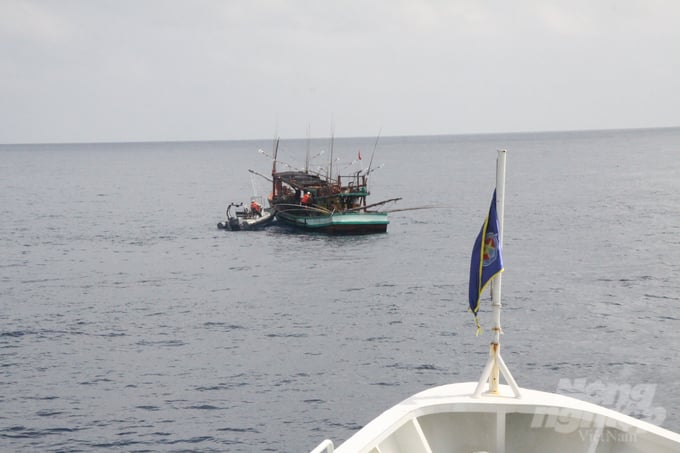
Fishing boats offshore. Photo: Kien Trung.
The shipowner stays in mainland and operates remotely via radio and voyage monitoring equipment affixed on the vessel. There are large ship owners who own multiple pairs of double trawlers, employ workers to net fish, and divide profits in the same manner as described previously.
Mr. Nguyen Van Muoi Hai, the helmsman of the fishing vessel that I had met in the previous days and who shared his story on the way back from the KN-506 vessel, told me about his experiences.
The offshore journey of Muoi Hai is less than two months old. When Hai returns to the mainland at the end of this year, perhaps his son will know how to rush out to greet him.
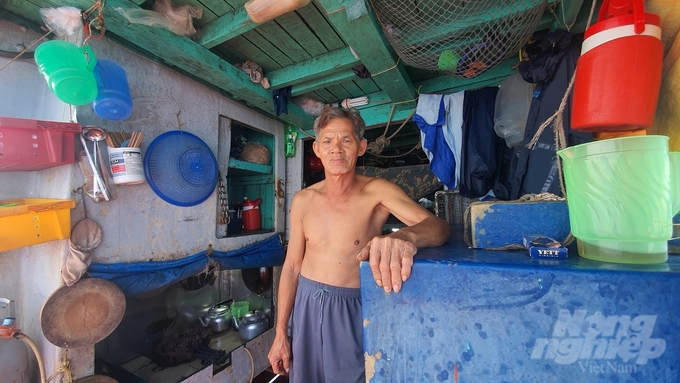
Mr. Tran Van Tri, from Kien Giang, has been at sea for more than 40 years. Photo: Kien Trung.
Muoi Hai invited me to visit his "house" in the midst of the ocean, surrounded on all sides by pounding seas. Hai's fishing vessel has a length of 24 meters, which conforms to open-ocean fishing regulations. Smaller vessels will only be able to fish in open waters, and even smaller vessels will only be able to fish in waters close to shore. A violation of this regulation will result in the handling of fishing vessels, and this is also one of the criteria for removing the "yellow card" for IUU fishing.
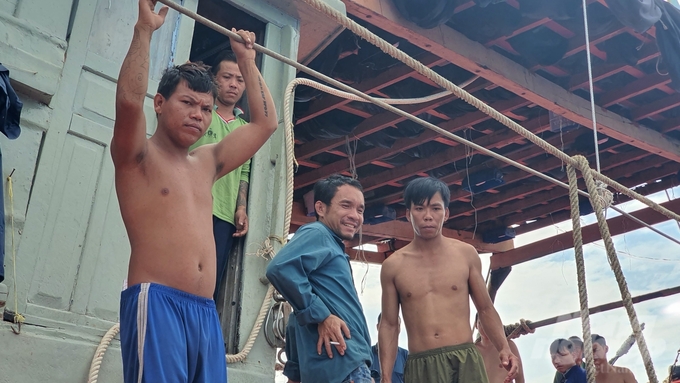
Fishermen clinging to the sea on the fishing boat of pilot Nguyen Van Muoi Hai (middle). Photo: Kien Trung

The sleeping and living area of the fishermen at sea is a narrow space that can fit a hammock, so you have to bend your back and not be able to stand straight. Photo: Kien Trung.
The fishing vessel Muoi Hai was divided into three sections, the largest of which was equipped with freezing trenches to preserve seafood after each fishing order numbered 1 through 8.
These refrigerated compartments keep fish fresh for several days until a purchasing ship arrives to collect the cargo. The cabin is reserved for the pilot. The captain (engine room chief) ate and slept in the ship's cabin. The personnel sleeps in the upper portion of the vessel, above the compartment roof. It is less than one meter tall, lacks illumination, and contains five or six parachute canopies. This narrowness makes it impossible for individuals inside to stand up erect.
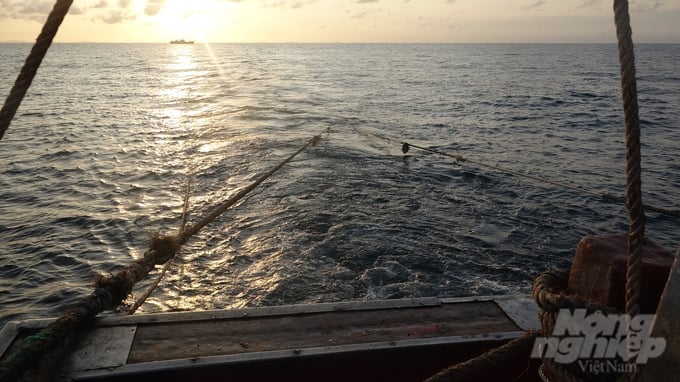
Fishing trawls of a pair of ships in the Southwestern waters. Photo: Kien Trung.
The sea is a site filled with mysteries, including the aspirations of fishermen and the anticipations of land-dwellers.
Many tributaries from the mainland flow into the Southwestern Sea, combining with natural ocean currents from the South China Sea to produce a counterclockwise flow (with the exception of the coast of Ca Mau - Kien Giang). The bottom structure, tides, and ocean currents produce upwelling and sinking areas, forming natural fishing grounds in the Southwest region, according to KN-506 ship helmsman Nguyen Van Duc, whose personnel is on duty 24 hours a day.
Translated by Linh Linh
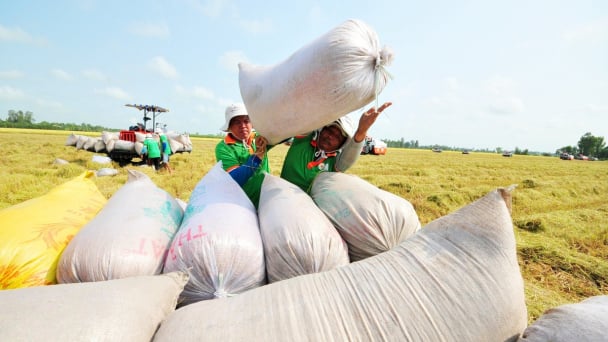
(VAN) The rice industry in the Mekong Delta is undergoing a major transformation, shifting toward sustainable, high-quality, and low-emission exports to meet the green and clean standards increasingly demanded by international markets.
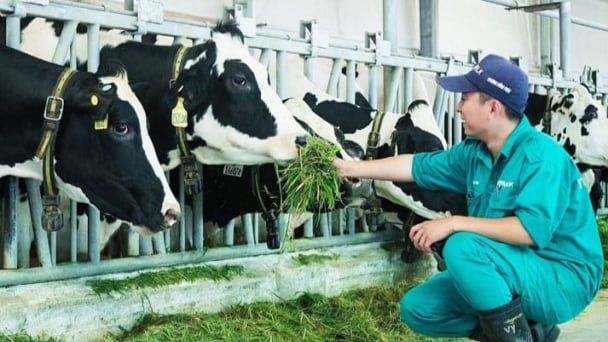
(VAN) According to Tong Xuan Chinh, Deputy Director of the Department of Livestock Production and Animal Health, Vietnam’s dairy cattle industry must overcome seven major challenges to achieve sustainable development.
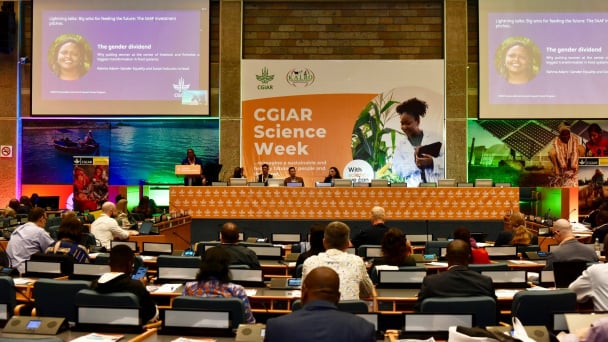
(VAN) The CGIAR’s Sustainable Animal and Aquatic Foods (SAAF) program represents a new approach that emphasizes the transformation of food systems toward sustainability.
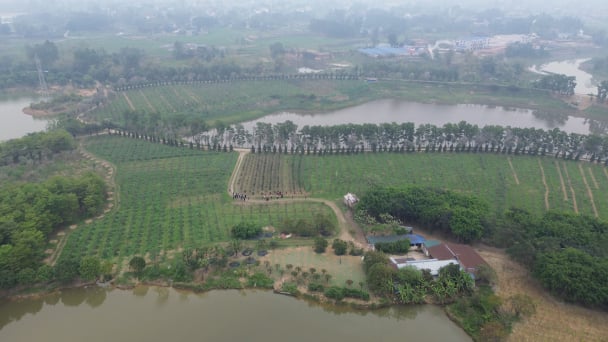
(VAN) Scientists assume that industrial agriculture has been 'outdated.' As a result, a comprehensive overhaul or a revolution in the direction of embracing ecological agriculture is needed.
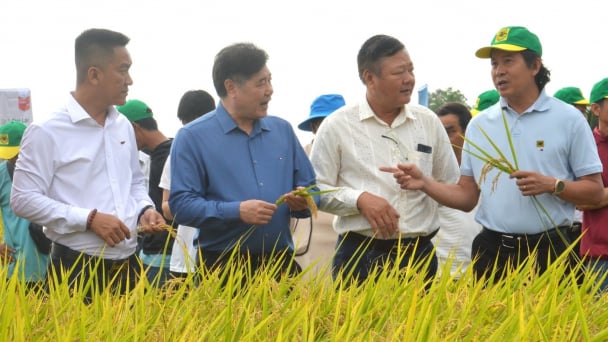
(VAN) The results from pilot fields are catalyzing the expansion of the One million hectares of high-quality, low-emission rice project in Kien Giang.

(VAN) On the morning of April 11, Cuc Phuong National Park received 18 individuals of endangered and rare wild animals from Da Nang city.

(VAN) FAO supports Vietnam in enhancing survey sampling techniques for the 2025 nationwide agricultural and rural census.